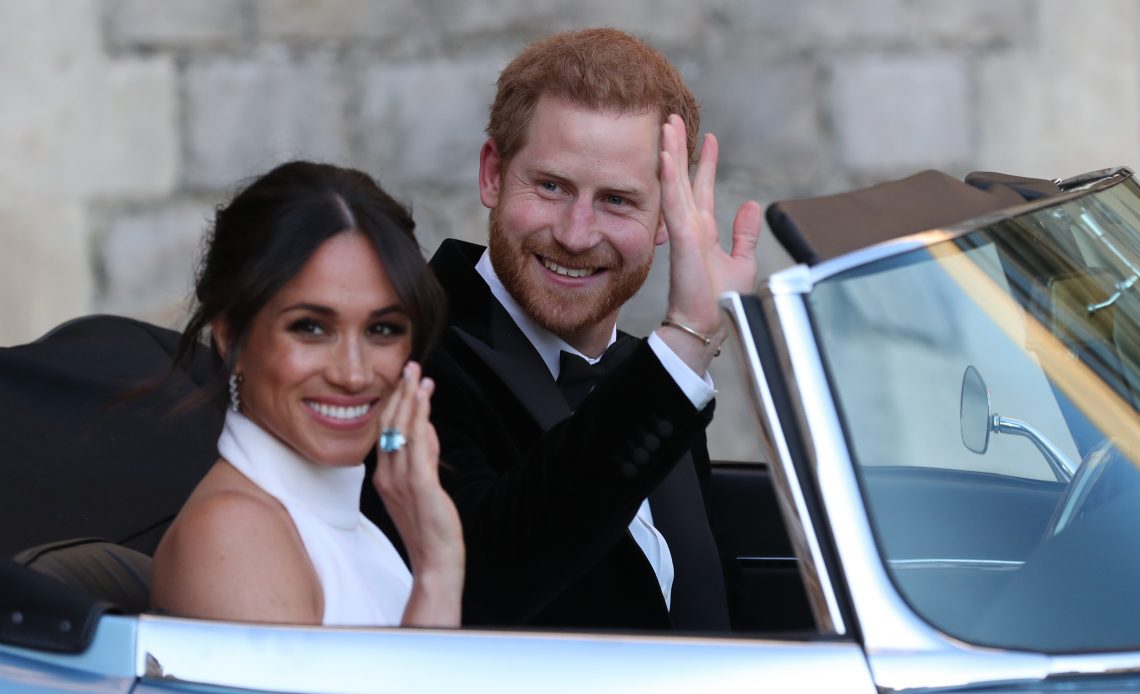The quest by Prince Harry and Meghan Markle for legal protection of their Sussex Royal brand has been one of the most prominent trade mark stories in recent years. It began with the couple launching a charitable foundation, and morphed into a saga of threatened trade mark oppositions, a media storm, and an apparent intervention from the Queen.

Prince Harry, Duke of Sussex and Meghan, Duchess of Sussex attend the Commonwealth Day Service 2020 on March 09, 2020 in London, England, their final official engagement before they quit royal life.
What can we learn from this, and what might the Sussexes have done differently?
Celebrities and trade mark applications
Successfully registered trade mark applications are not unusual in celebrity circles.
Beyonce has registered Beyonce, Sasha Fierce, Yonce and Beyhive, while Jay Z has registered Jay Z and Shawn Carter. But the couple failed to register Blue Ivy, their daughter’s name, when Veronica Morales of Blue Ivy events opposed the mark – indicating that she had used the trade mark since 2009 (before Blue Ivy’s birth).

Beyonce and Blue Ivy Carter arriving to the 2016 MTV Video Music Awards
It must be said, however, that I’m not aware of any royals who have succeeded in registering trade marks. And this, the royal element, is what makes this particular issue so interesting.
The history of ‘Sussex Royal’
By way of background, the Sussexes’ foundation applied for the protection of the term Sussex Royal through UK trade mark applications in June 2019.
In December 2019, an international trade mark application was filed, for jurisdictions including Australia, Canada, the European Union and the United States.
The UK trade mark applications received several threats of oppositions, and the Queen reportedly “banned” the couple from using the Sussex Royal brand.
The Sussexes then confirmed that they would not utilise the name Sussex Royal or any other iteration of Royal, and all pending trade mark applications were withdrawn.
Dual brand strategy: a solution… or not?
Curtis tells WTR that, “…if the couple had persisted in the use and registration of Sussex Royal beyond the UK, it would have led to a dual brand strategy, [with] immense practical difficulties…from a legal and brand strategy perspective.”
I agree with this statement by Curtis. For the well-known couple, a dual brand strategy would have certainly led to difficulties. I say this because the world already knows the royal history of the couple. Therefore, if the couple persisted in using the world Royal outside of the UK, this would still imply membership of the working royal family (at least, in those parts of the world where Royal would be used). However this is not the case. In my view, a dual brand strategy would have caused confusion or deception, which is the very thing that the law of trade marks seeks to prevent.
How might the couple have acted to prevent the drama? Harry and Meghan, and/or their legal team, might have sought to file their desired trade mark application/s long before their departure from the royal family and the ensuing attention from the global media – making it unlikely that they would face so much contention upon exiting.
Trade marks for influencers
Let’s suppose that you are an influencer, blogger or high-profile personality. How might you protect your brand’s intellectual property?
- Make a list of the names and phrases you are commonly using. The public, and any would-be copy cats, are likely to take an interest in these and start using them. If these are valuable to you, consider filing them as trade marks.
- Be on the lookout for copy cats and take action against them, in the form of a letter of demand, a telephone call or even a WhatsApp message. You do not want to give the impression that your trade mark is a ‘free for all’, as this will make it very difficult for you to enforce your mark later.
- Ensure that you are applying to register trade marks in relation to the goods or services that are of interest to you. Generally, your protection is limited to the identical or similar goods and/or services for which protection is claimed.
Trade marks for real people
If you are not famous, and/or your desired trade mark is not “high-profile and sensitive” (unlike the Sussex Royal brand), here are some tips for you:
- Conduct a trade mark availability and registrability search before making an application to register a trade mark. This will assist you in anticipating possible problems that your trade mark may face.
- Try to secure registration of your trade mark before commencing business activities using the name. The problem with commencing business and using the name before protecting the trade mark is that, should there be an objection to your trade mark, you may be required to re-brand. This can be costly and time-consuming.
- When coming up with trade marks, it is safest to steer clear of descriptive names, common names or names that suggest the goods or services for which the mark is to be registered. The best trade marks consist of ‘made-up’ words.
In conclusion, we can be grateful to the Sussexes for raising the profile of trade mark protection, which is so often undervalued. Watching from afar while they faced these challenges was an eye-opener to many who are in business or considering going into business. It’s also interesting to see that, in the world of trade mark law, we are all equal. Royal status, notwithstanding its perks, is not immune to trade mark scrutiny. For more information, visit www.spoor.com
Zama Buthelezi, a Senior Associate a Spoor & Fisher, South Africa, is a Trade Mark Practitioner with LLB and LLM degrees from the University of KwaZulu-Natal. She is an Attorney of the High Court of South Africa, and focuses on the field of trade mark enforcement.


